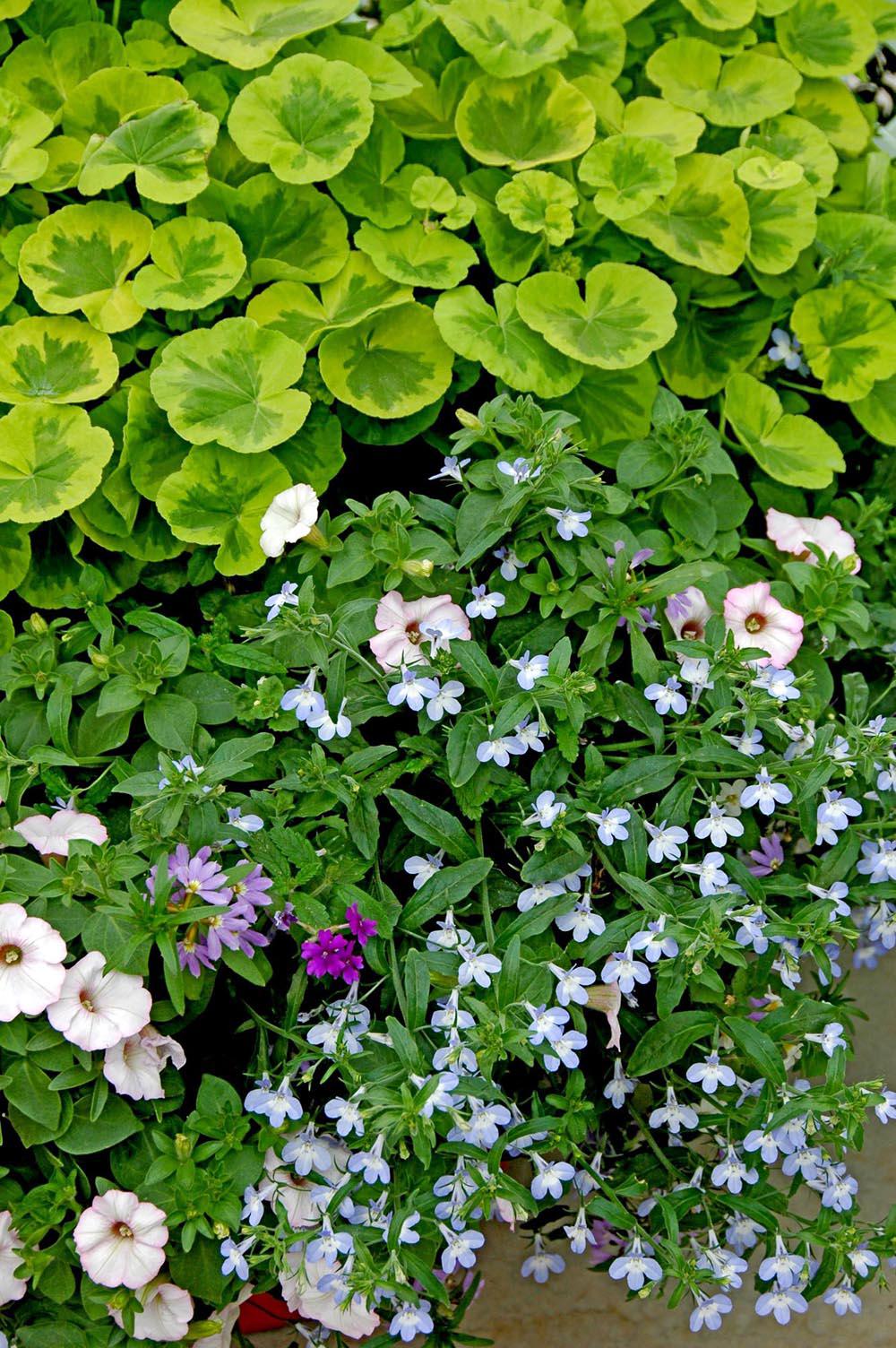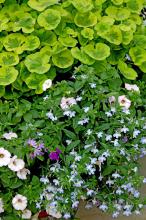Information Possibly Outdated
The information presented on this page was originally released on July 12, 2007. It may not be outdated, but please search our site for more current information. If you plan to quote or reference this information in a publication, please check with the Extension specialist or author before proceeding.
Lime colors continue to rock in the garden
By Norman Winter
MSU Horticulturist
Central Mississippi Research & Extension Center
Lime continues to rock the garden world. Recently, I have been enjoying a new iresine, or beefsteak plant, called Blazin' Lime.
Iresine is in the Amaranthaceae family, meaning it is related to the Joseph's Coat, gomphrena and celosia. The iresine is native to tropical areas of Brazil and Ecuador. Much like the new lime-green version of the Jewels of Opar called Limon (which I have written about in the past), Blazin' Lime represents another great choice in colorful foliage for the landscape.
You may remember Blazin' Rose, which was a big hit last year. Now the tropical-style garden can come alive with the lemon-lime and green color of Blazin' Lime. Although I mention the tropical-style garden, rest assured it will work anywhere as long as it gets protection from the hot afternoon sun.
Blazin' Rose and Blazin' Lime are related to the old-fashioned chicken gizzards of our grandparents' era. These grow much larger, almost resembling the coleus in stature, but they grow a little slower than coleus.
Blazin' Lime will partner incredibly well with bananas or the hot new Lime Zinger elephant ears. In the shade garden, combine them with hostas like Sum and Substance.
Ball FloraPlant is introducing Blazin' Lime and also a new coleus called Electric Lime. This coleus will electrify the shade or sun garden. I'm growing mine in several different areas to see how much sun they can take, and I can say the choice is yours. The plant will perform like an award-winner in all areas.
In one place, I have my Electric Lime coleus combined with the purple foliage and purple fruit of an Explosive Ember pepper. This makes an impressive combination planting.
In my backyard, I have them in a fertile, organic-rich bed with bananas, hot-pink hydrangeas and the hot new lavender Sunpatiens, the heat- and sun-tolerant New Guinea variety.
Don't be afraid to use Electric Lime in the flower garden with blue petunias like the Easy Wave Blue or the highly vigorous Suncatcher Sapphire. It would also combine wonderfully with Prairie Sun rudbeckia for a breathtakingly bold display.
Crystal Palace Gem geranium is the last great new lime-green plant I want to mention. Can you imagine growing a geranium and not caring if it blooms? That's how I feel about it. In our trials last year, it performed well in extreme conditions. It has a mounding habit, and yes, it will bloom with dark-red to magenta flowers.
But to be honest, I love it for the leaves, which are a combination of dark-green and wild-lime. The rich, lime-green color combines wonderfully in mixed containers or in the landscape. Blue and purple flowers really show off the foliage of the Crystal Palace Gem. This one is being introduced by Fisher USA.
Geraniums are heavy feeders, and many gardeners do not apply enough fertilizer to meet the plants' nutrient needs. Feed every two weeks with a water-soluble fertilizer like a 20-20-20, or apply a granular controlled-release fertilizer per formula recommendation.
I don't know how you feel about lime or chartreuse in the garden, but I love it. I will probably keep using it long after the trend ends. Hopefully it won't.









